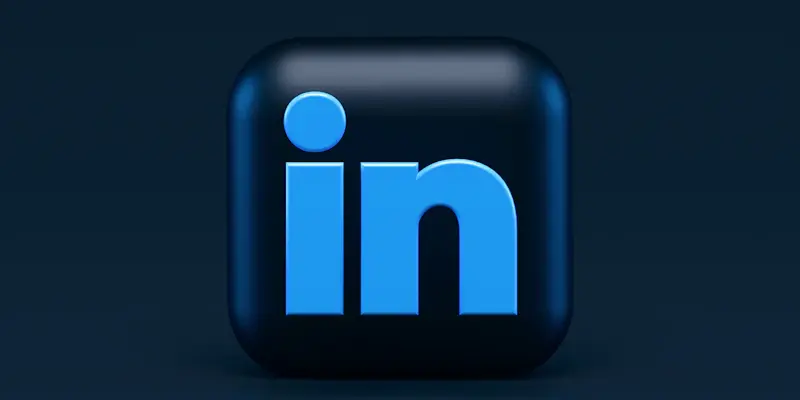The job market has seen significant transformations in recent years, with the integration of advanced AI tools reshaping how professionals approach job searching on platforms like LinkedIn.Gone are the days when simply uploading a resume and waiting for responses sufficed; today’s job seekers now harness the power of AI to optimize their profiles, match with suitable roles, and enhance overall networking strategies. These cutting-edge developments have made LinkedIn a pivotal tool for career growth, enabling individuals to navigate the competitive landscape with greater precision and efficiency.This evolution is not only streamlining the job search process but also improving the quality of job matches.
Optimizing LinkedIn Profiles with AI
A major advancement in job searching on LinkedIn has centered around the optimization of user profiles through AI tools.One such tool, Careerflow’s AI LinkedIn review, evaluates user profiles and provides personalized feedback on various elements, such as headlines, summaries, experience descriptions, and skills. By ensuring these aspects align with industry standards, AI tools help job seekers enhance their profiles for better visibility and search results.For instance, the AI identifies content gaps, suggests relevant keywords, and compares profiles to those of successful professionals in the same industry, offering actionable insights for improvement. The result is a more polished and strategically aligned profile that stands out to recruiters.
Furthermore, the use of AI in profile optimization goes beyond merely adjusting keywords or rephrasing statements.These tools delve deeper into analyzing the overall tone and presentation of the profile, ensuring it resonates well with hiring managers. This includes assessing the use of industry-specific jargon, the balance between soft and hard skills, and the overall coherence of the career narrative.By doing so, AI tools help users present a comprehensive and compelling professional story that aligns with current market demands and expectations. Ultimately, this level of refinement provided by AI translates into higher engagement rates from recruiters and a greater likelihood of securing job interviews.
Advanced Job Matching Capabilities
LinkedIn’s AI-powered Job Match tool has revolutionized how users find and apply for jobs by analyzing profiles and job postings to provide tailored insights into role suitability. Unlike traditional keyword-based systems, this tool assesses requirement-specific qualifications and individual achievements to offer a more nuanced match.This approach ensures that candidates are not only aware of job opportunities but also understand how well they fit the role, thereby improving their chances of landing an interview. For premium subscribers, enhanced insights further enable a strategic positioning against the competition, offering a detailed breakdown of strengths and areas for improvement.
This AI-driven job matching process also factors in various dimensions such as industry trends, organizational culture fit, and career progression likelihood, therefore making the matches more relevant and personalized. Users receive recommendations for roles that are closely aligned with their experiences, skillset, and career aspirations.Moreover, real-time feedback and continuous updates on job matching criteria help candidates stay abreast of shifting industry standards and evolving employer requirements. This dynamic matching capability is particularly beneficial in industries with rapid technological advancements and changing skill requirements, ensuring that job seekers remain competitive and relevant in their search.
Application Customization and Networking Enhancement
The automation of application customization has been another game-changer for job seekers, with external AI tools like JobLogr simplifying the process by generating tailored resumes and cover letters.These tools have achieved significant success rates in emphasizing relevant qualifications by analyzing job descriptions and aligning application materials accordingly. Advanced AI technologies also assess the tone and engagement level of applications, catering to specific company cultures and ensuring compatibility with applicant tracking systems (ATS). This continuous improvement in AI tools results from analyzing successful applications across diverse industries, providing job seekers with a refined edge in their applications.
In addition to application customization,AI has significantly enhanced networking strategies on LinkedIn. By analyzing career trajectories and professional interests, AI systems can suggest strategic connections that align with a user’s career goals. These recommendations often include mentors, industry influencers, and hiring managers within target organizations, thereby uncovering potential job opportunities not visible through traditional job searches.Engaging with AI-recommended connections has consistently shown increased interview opportunities and a more robust professional network. The ability to proactively build and maintain relationships with key industry figures through AI-driven suggestions further bolsters a candidate’s position in the job market.
Staying Current with AI Trends
The job market has undergone substantial changes in recent years, thanks to the integration of sophisticated AI tools that are reshaping how professionals conduct job searches on platforms like LinkedIn. Previously, job seekers could simply upload a resume and wait for responses. However, those days are over; modern job seekers now leverage AI to optimize their profiles, find suitable job matches, and refine their networking strategies.These advanced technologies have turned LinkedIn into an essential tool for career development, allowing individuals to navigate the competitive job market with greater accuracy and effectiveness. This evolution is not only making the job search process more efficient but also improving the quality of job matches. Additionally, AI can analyze profiles to provide personalized recommendations, help individuals identify skill gaps, and suggest ways to improve their visibility to recruiters. By utilizing AI, job seekers can now approach the employment landscape with a level of confidence and precision previously unattainable, making LinkedIn an invaluable asset for advancing one’s career.

